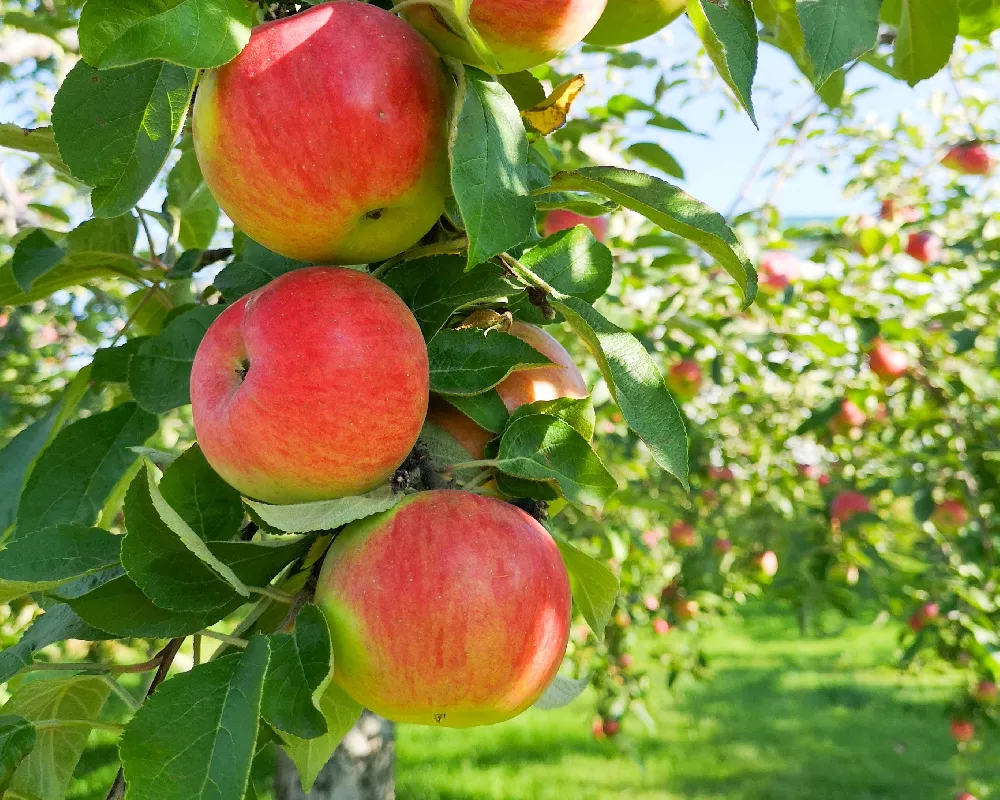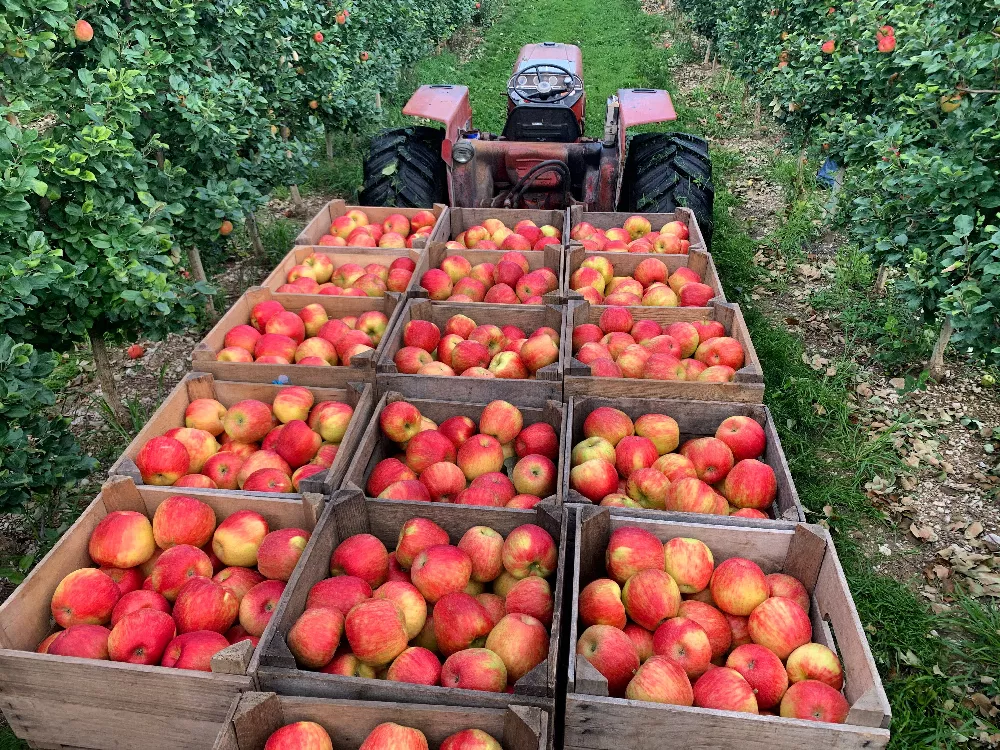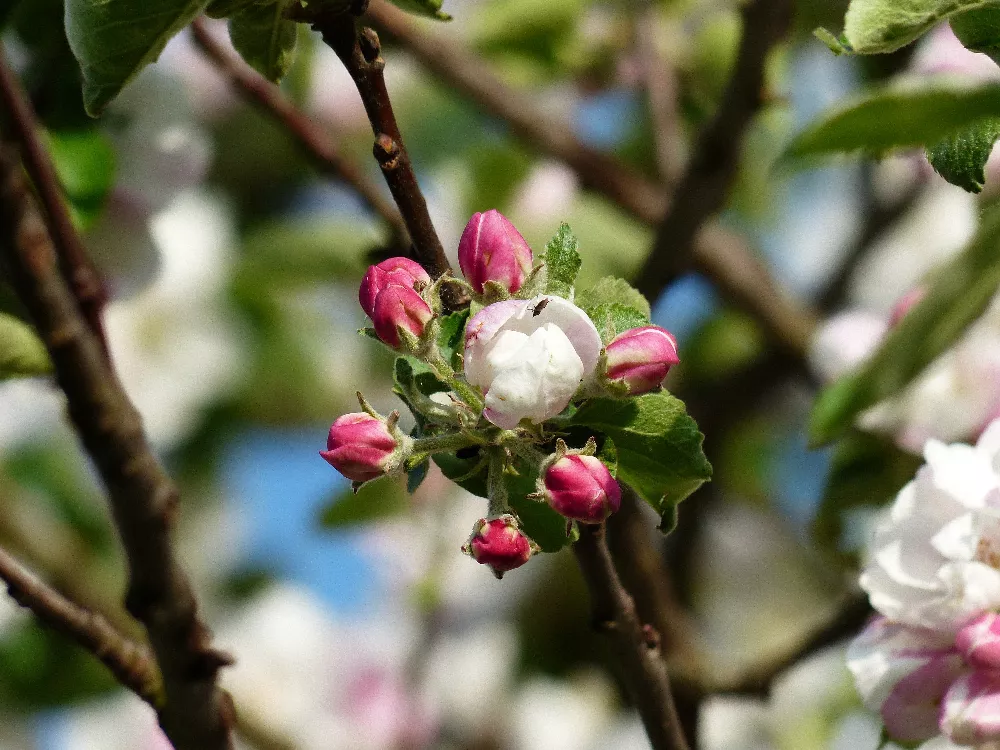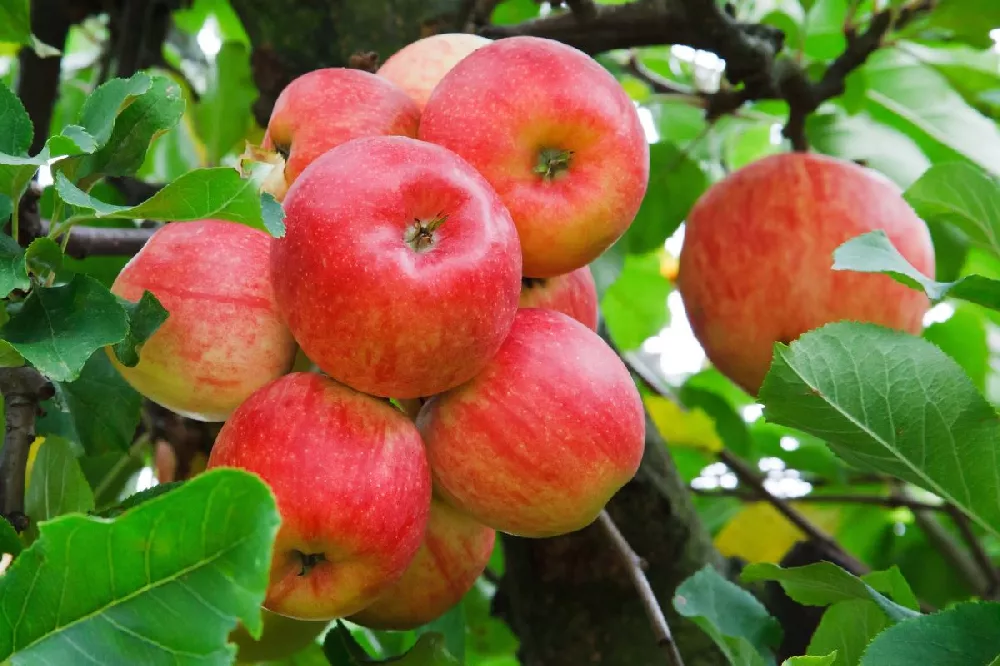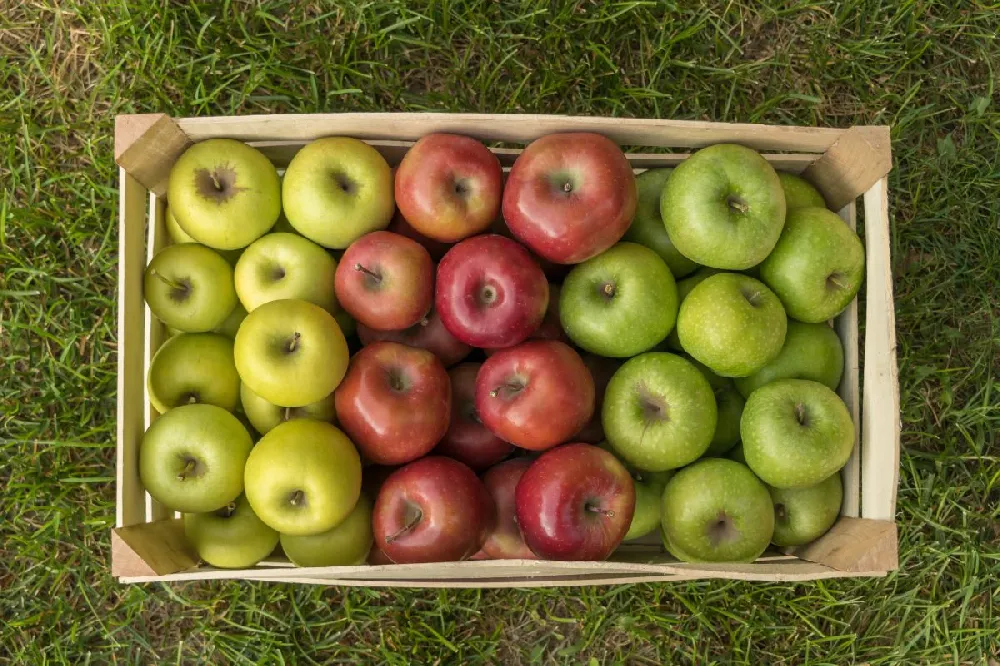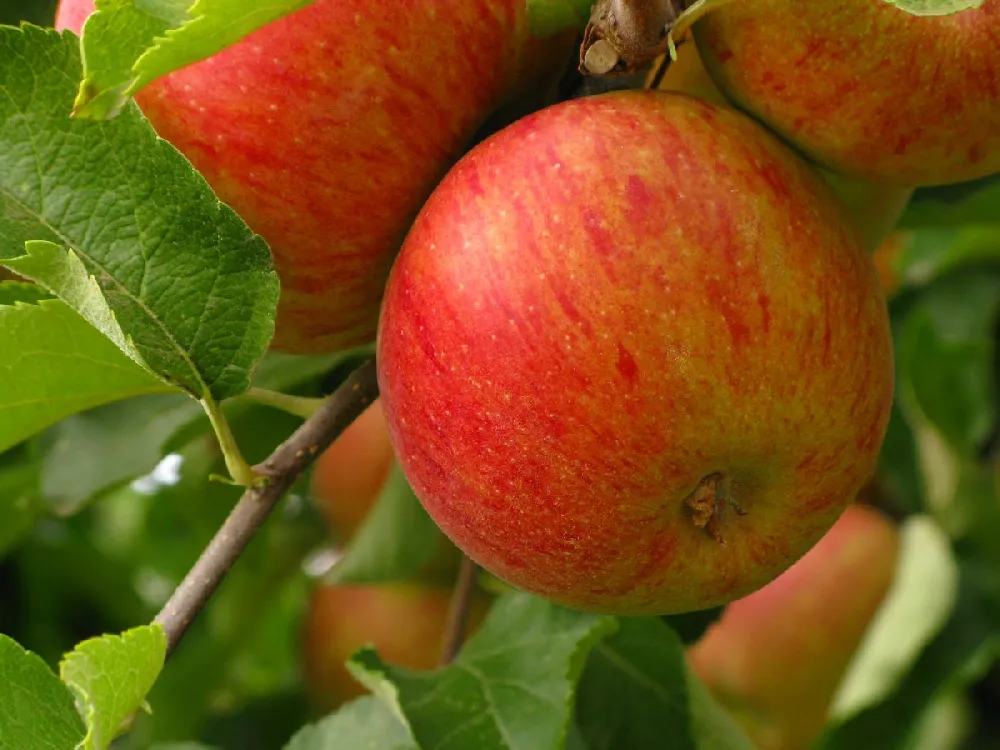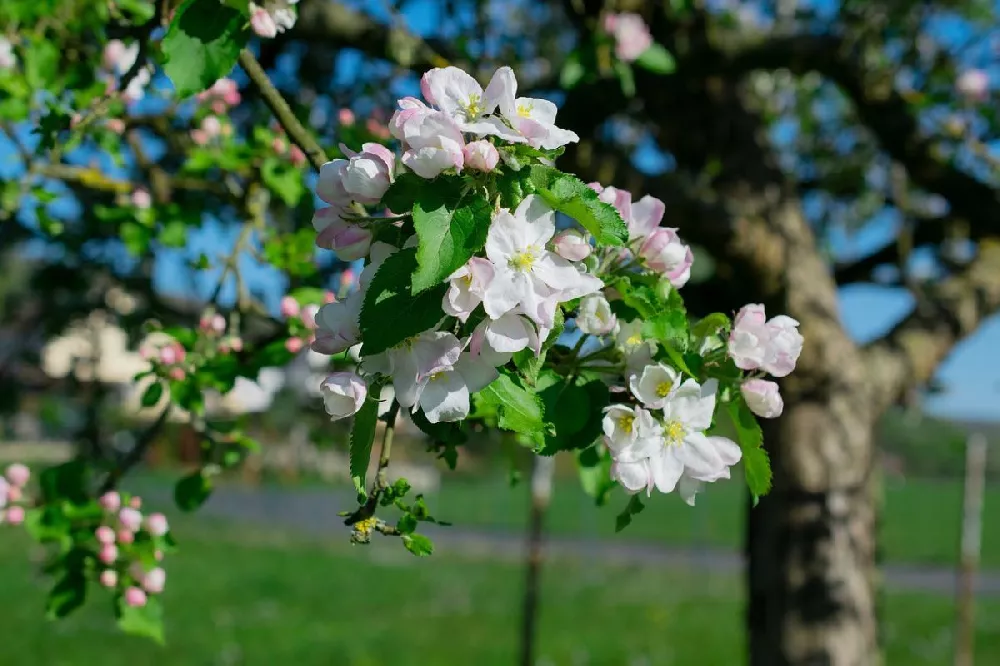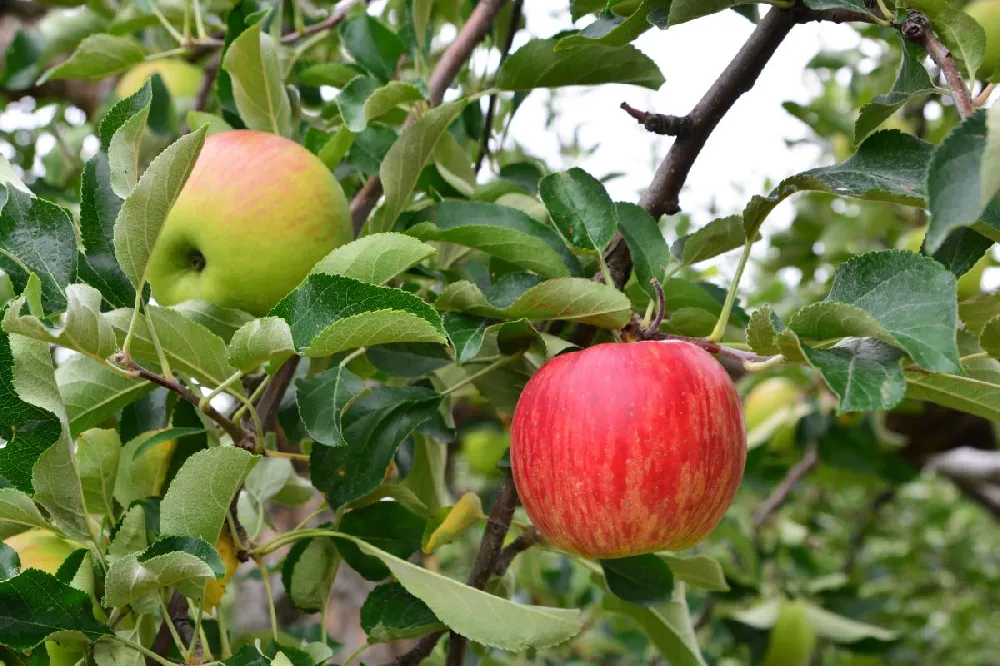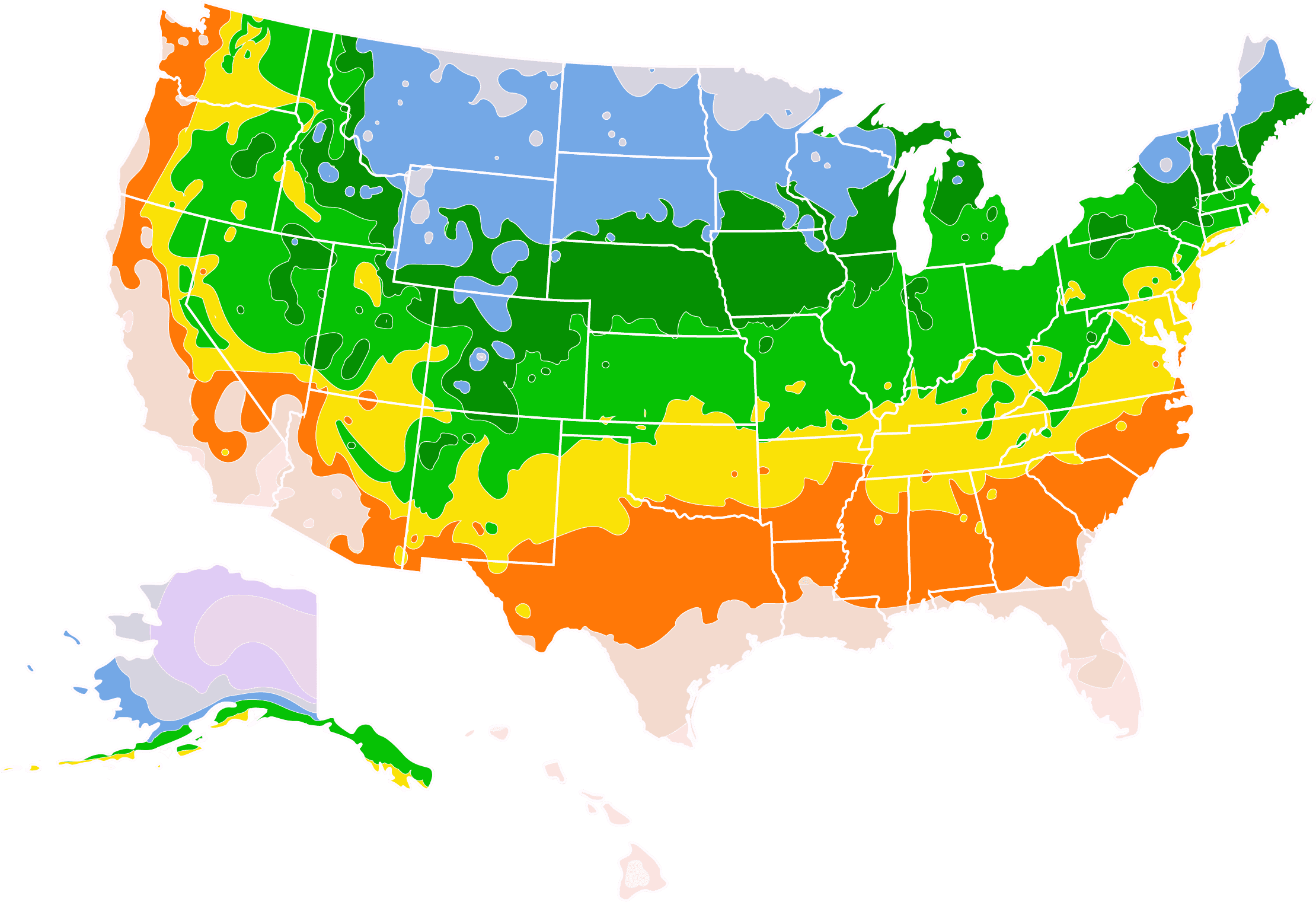- Home >
- Apple Trees >
- Honeycrisp Apple Trees
Honeycrisp Apple Trees for Sale - Buying & Growing Guide
- Ships in 1-2 days
- 1-Year Warranty Eligible
- Pots or accessories are not included unless specified in the product options.
Shipping Details:
Once your order is shipped, you’ll receive an email with a tracking number and estimated delivery date. Most orders ship immediately, but some items are seasonal and may only ship in spring or fall. These products are noted on the website.
The Honeycrisp apple tree (Malus ‘Honeycrisp’) is a cultivated apple variety originating from the University of Minnesota. The apples produced by the cultivar are prized for their ability to be eaten raw and feature a combination of sweet and tart flavors. Growing your own Honeycrisp apple trees is a rewarding experience, providing you with fruits that are far more fresh and flavorful than store-bought varieties. Here are some other facts about Honeycrisp apple trees:
- The crisp, juicy fruits grow to at least three inches in diameter.
- Honeycrisp apple tree transplants usually fruit after about 2 years.
- In ideal conditions, they can produce fruit for over 30 years.
Plant Care
Sunlight

Honeycrisp apple trees should receive at least six hours of direct sunlight per day.
Watering
These trees should be watered about once per week. Water them more frequently during the heat of the summer and less frequently when they go dormant during the winter.
Fertilizing

All-purpose 10-10-10 fertilizer is recommended for Honeycrisp apple trees.
Planting and Care
Planting instructions
When choosing a planting site for your Honeycrisp apple trees, opt for a location with well-draining soil that receives full sun. When you’ve found the perfect place, dig a hole to the depth of the tree’s root ball, and twice as wide. Place the tree in the hole, being sure to keep it upright and level with the ground. Backfill the hole with soil and tamp down lightly. Give the newly-planted tree a generous drink of water.
Watering and nutrients
While the new tree is establishing itself, deeply water the site a few times per week. Once it is established, you can slow down your waterings to once per week, as long as you are supplying moisture deep into the roots each time. During the heat of summer, your apple trees will appreciate a watering every day or two. When the trees go dormant over winter, only water them during periods of low rainfall. The fruit production of your apple trees will benefit from a light layer of 10-10-10 fertilizer applied each spring around the base of the tree.
Pollination
Honeycrisp apple trees are not self-fertile and will require another cultivar in the area in order to fruit. Apple trees are organized into flowering groups based on the time of year that they bloom, so you will need to choose another variety that blooms at a similar time. You will also need to make sure that the other cultivars you choose to plant are suitable for your growing zone. To increase your rate of pollination, try planting pollinator-friendly species nearby to attract more bees and other insects to your apple orchard.
Pruning
Pruning is a beneficial practice for apple trees. Most pruning should be performed in late winter or early spring, before the tree comes out of its dormant period. Start by removing crowded areas of the tree, as too much shade can prevent blooms and fruit from properly forming. Prune away dead, dying, or diseased branches from your apple tree as soon as you spot them. Dispose of any diseased branches well away from your apple trees to prevent any further spread.
Pests and diseases
Apple trees are notorious for harboring various pests and diseases. Common fungal diseases include powdery mildew and black rot, usually caused by excessive moisture and lack of airflow. Pruning is a form of preventative care that can help avoid these fungi from invading your orchard. If these diseases do occur, remove the infected areas immediately, disposing of the branches away from your other apple trees. Apple tree pests invade as the fruit develops and include codling moths and maggot flies. If you see insect eggs on your apple trees, apply a non-toxic insecticide or pest-preventing oil.
Harvesting
Honeycrisp apple trees bloom relatively early, usually around the month of April in most climates. This leads to an equally-early harvest in August or September. Honeycrisp apples are ready to be harvested when they are firm, yet sweet and juicy. Apples that are harvested too early will have an unpleasant sour or tart taste. If you want to prolong the storage life of your apples, pick them a few days earlier. Honeycrisp apples can survive a frost — just allow the fruits to thaw before harvesting.
FAQs
What apple cultivars will pollinate a Honeycrisp tree?
As Honeycrisp trees bloom in April, you will need to find other varieties that bloom and produce pollen at the same time. Possible pollination partners for your Honeycrisp apple trees include the Fuji, Gala, Golden Delicious, and McIntosh cultivars, among many others. Apple trees bloom for a relatively short amount of time (sometimes only for one week), so it is especially important to line up your cultivars’ bloom times. Since Honeycrisp apples are known for their superior fresh taste, you may try to plant another variety that is good for baking or long-term preservation.
How large do Honeycrisp apple trees grow?
Mature Honeycrisp apple trees planted in ideal conditions can reach heights between 14 and 18 feet, but many growers choose to prune their trees to a more manageable size. The trees form a rounded canopy, growing to a width between 12 and 15 feet. They feature a moderate growth rate, putting on one to two feet of growth in their early years. Full-size Honeycrisp apple trees can live and produce for over 30 years when grown in ideal conditions.
How can I increase the productivity of my apple tree?
Gardeners that are new to apple trees often become frustrated when their trees don’t produce in the first year or two. There are a variety of factors that can affect bloom and fruit production, including climate conditions, the quantity of pollinators in the area, and the amount of other apple cultivars planted nearby. If you are experiencing low productivity with your apple trees, be sure that your tree is planted in well-draining soil and receives full sun. An application of fertilizer can also increase the overall health and production of your tree.
Is Honeycrisp a hybrid species?
The Honeycrisp apple was produced through the apple breeding program at the University of Minnesota. The university created the Honeycrisp variety by cross-pollinating hundreds of trees until they perfected the sweet, crisp fruits. Honeycrisp is a relatively new cultivar, first being introduced in 1991. By 2006, the Honeycrisp apple had been named as the state fruit of Minnesota due to its widespread popularity. First Kiss is another popular cultivar produced by the University of Minnesota, created by crossing the Honeycrisp with an early-fruiting variety, AA44.
Compare Similar Products
Customer Reviews
 (3 Honey crisp apple trees
(3 Honey crisp apple treesTwo of the trees appear to be doing well. One tree appears to be struggling. I am hoping that it survives.
 Time will Tell
Time will TellRelatively easy ordering process. Quick shipment and expertly packed. Trees arrived in great condition and got them in the ground the same day. It's been about a week and there are new leaves and also what looks like a few new branches emerging.
 VERY HEALTHY TREES/ DONE WELL GUYS!
VERY HEALTHY TREES/ DONE WELL GUYS!very healthy
 Healthy, beautiful tree upon arrival
Healthy, beautiful tree upon arrivalBought these trees online since the state of MI banned sales of such during the pandemic. Tree arrived beautiful, very healthy and full of leaves and a few blooms. It entered total shock once in the ground, and then deer thought it looked prettt good, so they ate it. Will build a deer fence around it this weekend. Hoping it's not damaged beyond repair.
